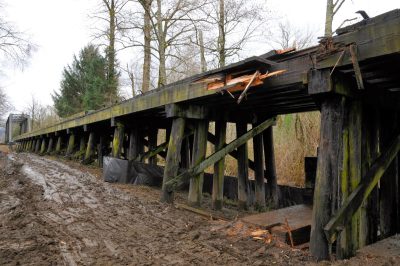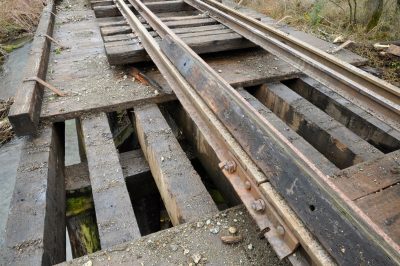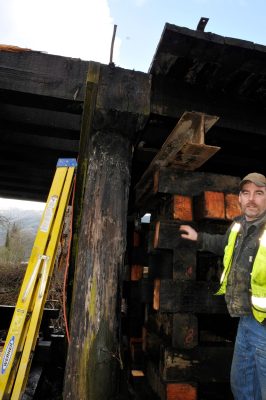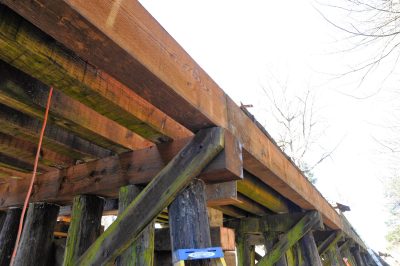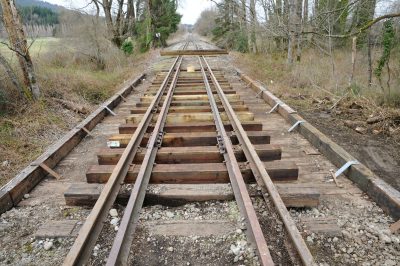So you think you can repair a bridge? Well great, you start tomorrow! Now if only it were that simple…
Most bridges are near water and at a minimum require a hydraulic permit before work can begin, and this usually adds conditions to a project. Railway bridge work – by law – must be supervised by someone experienced in the maintenance and repair of railway bridges. And any modifications must be reviewed by a qualified railway bridge engineer. So even the damage caused by a tree striking a bridge triggers a variety of additional requirements besides just ordering new timber.
A tree striking a bridge? Yes, that was the subject of a recent blog post. A very large tree struck and damaged formerly Northern Pacific’s Bridge 35’s trestle during a recent windstorm. Bridge inspectors allowed several trains to pass but stipulated that permanent repairs had to be undertaken right away. And as one of the largest objects in the Museum collection, how those repairs are performed is also critically important for collection care standards. So the Museum committed to completion prior to the start of the 2014 operating season using an experienced contractor and licensed engineer.
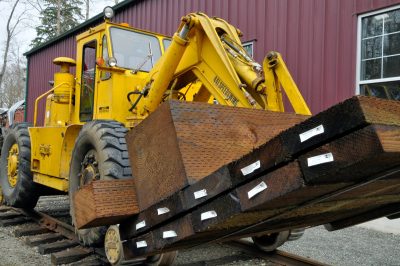
First of the timbers required to repair Bridge 35 arrived and were moved to the site using the Speedswing.
Step one: given the urgency of the bridge repair, the Northwest Railway Museum was able to secure an emergency hydraulic permit. Step two: pressure-treated railway bridge timbers were located in South Dakota (ironically, made from Douglas fir cut near Tacoma) and were ordered. Step three: a qualified contractor, foreman and engineer were identified and hired. Step four: real work begins!
To help control costs, some of the site preparation was performed by community work crews. They removed bolts and shovel railway ballast off the deck. In addition, Museum volunteers cleaned, chased threads, and primed the bolts to allow reuse. And the Museum agreed to supply the materials to avoid handling charges from the Contractor.
Late in March 2014 Pivetta Brothers Construction began work on the bridge under the supervision of Muth Consulting Engineers. Best practices including a silt fence were established to prevent any silt, dirt, rock or pieces of wood from getting in the river. Concrete ecology blocks and timber jacking pads were situated under the damaged section. Damaged deck and curb timbers were removed along the stringers. Bracing and bolts were removed from the pile cap. Then blocking was used to support a wide flange beam that in turn was used to support the bridge deck. This allowed the damaged pile cap (the end was lightly crushed when the tree hit) to be removed and replaced.
Two stringer sections each 28 feet long, 9 inches wide and 18 inches deep were damaged by the tree strike. These were replaced with two new Douglas fir stingers of similar (slightly wider) dimension that were pressure treated with copper naphthenate preservative. The timbers had to be drilled for indexing pins, and for bolts to tie the stringers to the deck and ballast curb.
Total working time for the trestle repair was five days and was completed before the end of March; costs exceeded $25,000. Ideally, this would have been the extent of bridge work for 2014. However, that was not to be and will be the subject of an upcoming blog post.

